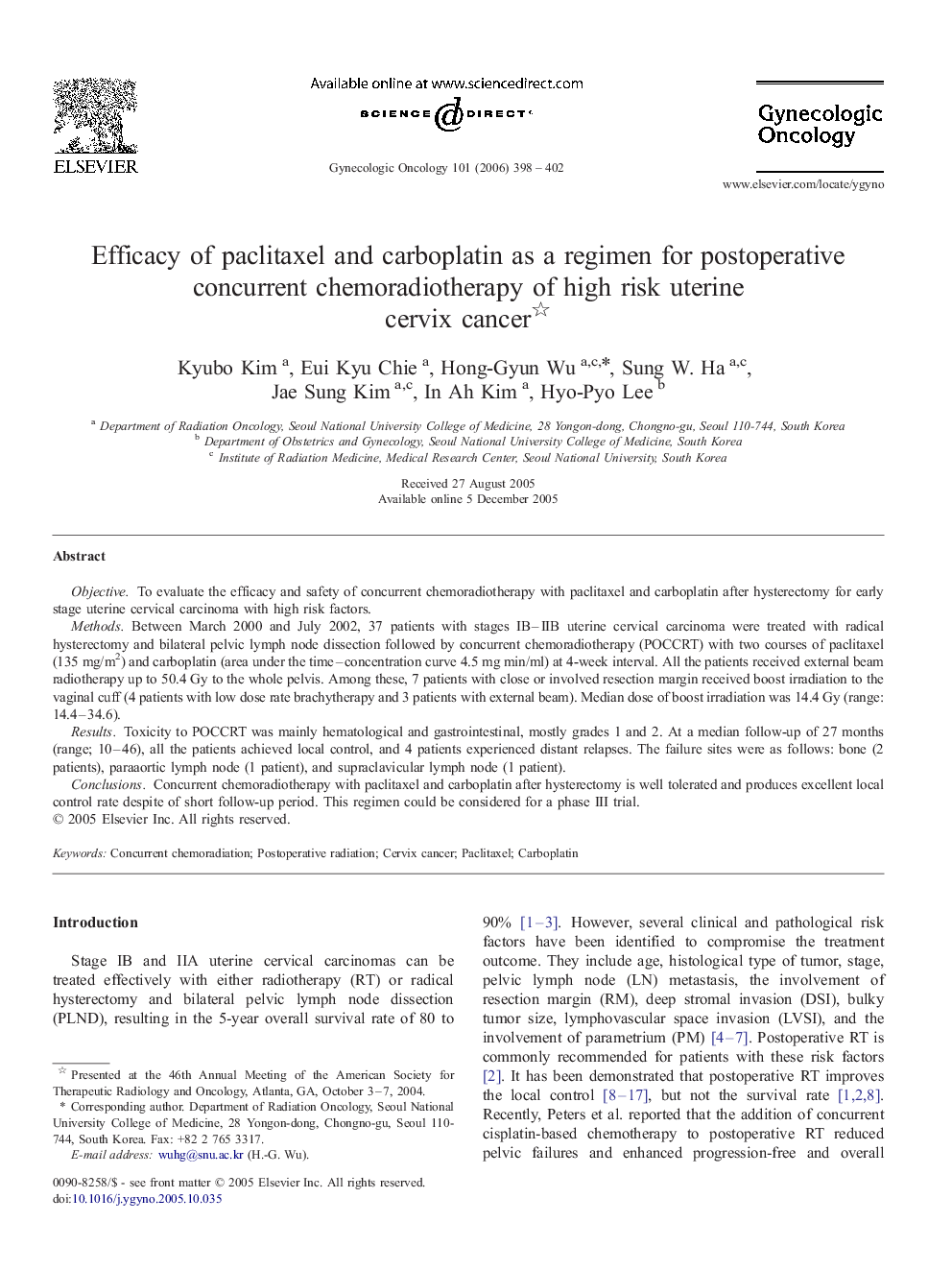| Article ID | Journal | Published Year | Pages | File Type |
|---|---|---|---|---|
| 3943945 | Gynecologic Oncology | 2006 | 5 Pages |
Objective.To evaluate the efficacy and safety of concurrent chemoradiotherapy with paclitaxel and carboplatin after hysterectomy for early stage uterine cervical carcinoma with high risk factors.Methods.Between March 2000 and July 2002, 37 patients with stages IB–IIB uterine cervical carcinoma were treated with radical hysterectomy and bilateral pelvic lymph node dissection followed by concurrent chemoradiotherapy (POCCRT) with two courses of paclitaxel (135 mg/m2) and carboplatin (area under the time–concentration curve 4.5 mg min/ml) at 4-week interval. All the patients received external beam radiotherapy up to 50.4 Gy to the whole pelvis. Among these, 7 patients with close or involved resection margin received boost irradiation to the vaginal cuff (4 patients with low dose rate brachytherapy and 3 patients with external beam). Median dose of boost irradiation was 14.4 Gy (range: 14.4–34.6).Results.Toxicity to POCCRT was mainly hematological and gastrointestinal, mostly grades 1 and 2. At a median follow-up of 27 months (range; 10–46), all the patients achieved local control, and 4 patients experienced distant relapses. The failure sites were as follows: bone (2 patients), paraaortic lymph node (1 patient), and supraclavicular lymph node (1 patient).Conclusions.Concurrent chemoradiotherapy with paclitaxel and carboplatin after hysterectomy is well tolerated and produces excellent local control rate despite of short follow-up period. This regimen could be considered for a phase III trial.
